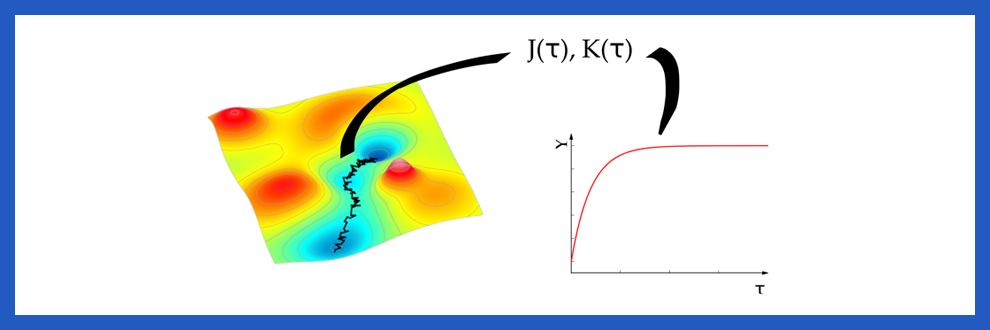
Describing many-particle systems with low-dimensional variables
Usually it is highly unpractical to study a complex system following the dynamics of every single atom; thus one often describes it just with one or few one-dimensional variables. For example, the dynamics of a protein can be followed from the ellipticity in circular-dichroism experiments or from the fluorescence intensity of tryptophanes. Also in the analysis of molecular simulations one usually focuses on one-dimensional plots of quantities that are function of the high-dimensional coordinates of the system. However, if the low-dimensional variable to monitor is chosen unwisely, its dynamics can be difficult to interpret. In an article publsihed recently, members of CC&B develop a theoretical framework to assess the feature of low-dimensional variables, and to calculate the effective force and diffusion coefficients of complex systems mapped onto these new variables.
R. Meloni, C. Camilloni and G. Tiana
Properties of low-dimensional collective variables in the molecular dynamics of biopolymers
Phys. Rev. E
Available on journals.aps.org
